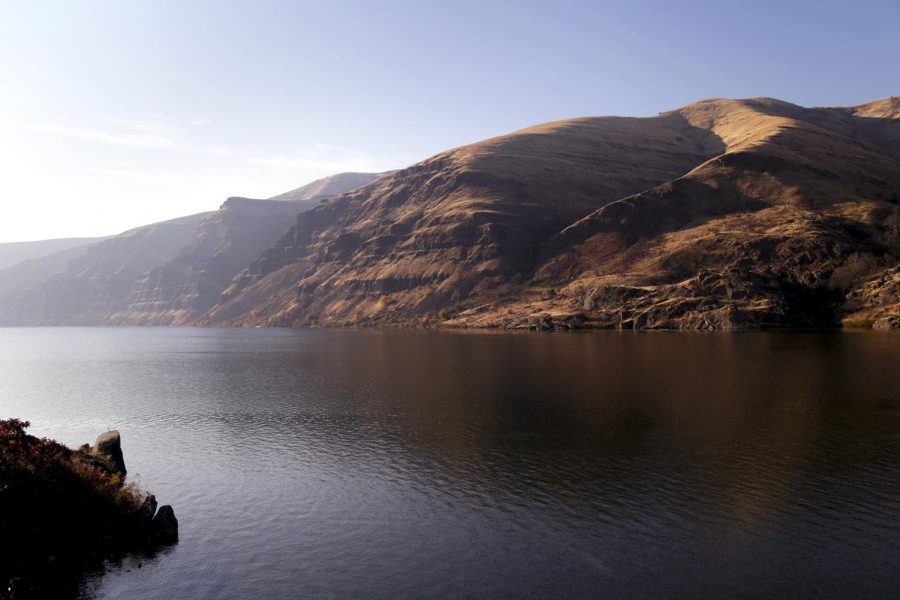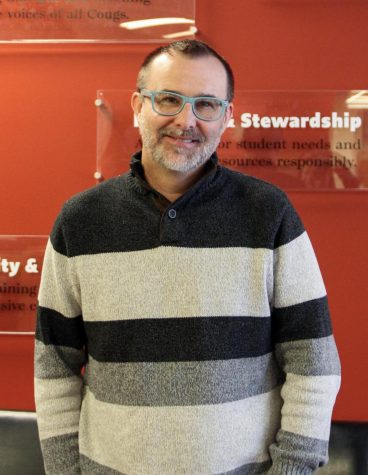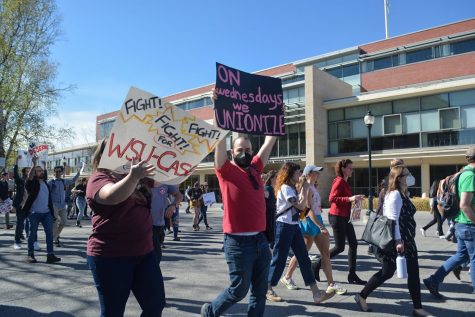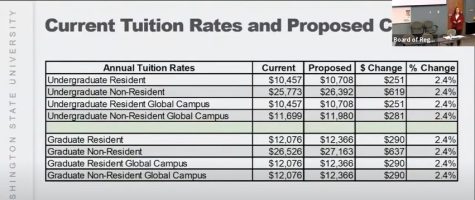Colleges cut funding to environmental centers
Two environmental programs face reduced budgets as university lowers spending
RYAN PUGH | Daily Evergreen File
With reduced funding, research on natural resources, such as in the Columbia River Basin, may be scaled back. The Snake River, as seen on Oct. 26, feeds into the Columbia River.
November 14, 2017
Three WSU colleges will cease to provide funding to two of the university’s environmental centers, both hubs of interdisciplinary efforts to study water issues, climate change and sustainability.
The Water Research Center and the Center for Environmental Research, Education and Outreach have both received slightly under $100,000 annually for the past three years from colleges that are now ending their financial support as they work to meet President Kirk Schulz’s order to pare down spending by 2.5 percent across the university.
CEREO Director Stephanie Hampton said the loss of funding comes at a time of momentum for the center. She said they received a “glowing review” on an external evaluation last year.
“That kind of growth may slow down a little bit,” Hampton said, “unless we can find some kind of external support.”
The College of Arts and Sciences, the Voiland College of Engineering and Architecture, and the College of Agricultural, Human and Natural Resource Sciences have funded the centers under an agreement that went into effect in 2014 and is set to expire at the end of the year. Hampton noted there was no expectation the colleges would continue funding the centers.
“The deans certainly all see value in it,” she said. “But everybody’s hurting right now a little bit as we try to save money on the budgets.”
The centers both also receive funding from the Office of Research, and CEREO receives funding from the Provost’s Office and the Graduate School as well.
Hampton said the shortfall won’t cripple the center, but she added that it isn’t a trivial amount either. WRC Director Jonathan Yoder said the WRC is in the same situation.
“It was enough that we have to do things differently,” he said.
With nearly $100,000 less in the coming year, Yoder said the WRC will have to cut an associate director position and divert money from research, education and outreach to pay for administrative salaries.
He said they will also have to eliminate funding for one of their seed grants, which fund preliminary research on water resource issues, typically for early-career professionals and graduate students.
Hampton said CEREO, which will have about $90,000 less, won’t be able to give out any seed grants this year, and will have to be frugal in the workshops and speakers it brings to campus.
CEREO and the WRC share a clinical assistant professor who was previously funded by the colleges, and both will now have to use grant money to fund the position. Hampton said CEREO has about $8.4 million in active grants.
Both CEREO and the WRC draw on faculty from a wide range of fields, such as biological sciences, communication and civil engineering, to collaborate on projects related to environmental issues.
Hampton said faculty members founded CEREO 10 years ago as a way to focus on research that blended many academic areas of expertise.
“Sometimes it’s hard to do if you’re just based in a single college,” Hampton said.
CEREO’s current projects include research into the management of natural resources like food, energy and water in the Columbia River Basin, and the social, economic and political dynamics of fire management.
The WRC is one of 54 National Institutes for Water Research, and because of this it receives about $90,000 per year from the U.S. Geological Survey.
Both Hampton and Yoder said they will continue to pursue extramural funding. Hampton said they regularly seek large grants from organizations like the National Science Foundation and the U.S. Department of Energy, which help to boost the center’s activity. She added that the WSU Foundation keeps an eye out for donors interested in environmental programs.
“Like anybody else,” Hampton said, “we’ll go through a period of lean times and just try to keep doing good work.”
In a memo to CAHNRS faculty and staff earlier this month, Dean Ron Mittelhammer outlined steps the college would take to reduce spending. One step was to provide less financial support to “a number of centers, program and initiatives intended to advance general programmatic excellence at WSU.”
Mittelhammer listed CEREO, the WRC and the Kamiak High Performance Computing facility as three examples. Aurora Clark, director of the Center for Institutional Research Computing, said via email that they anticipated this loss of funding for Kamiak and were not relying on it.
The College of Arts and Sciences memo from Dean Daryll Dewald also mentions reduced funding to WSU centers and programs, but does not name any.
The directors of communication for both CAHNRS and the College of Arts and Sciences declined to specify which other centers and programs the colleges would withdraw funding from.




















